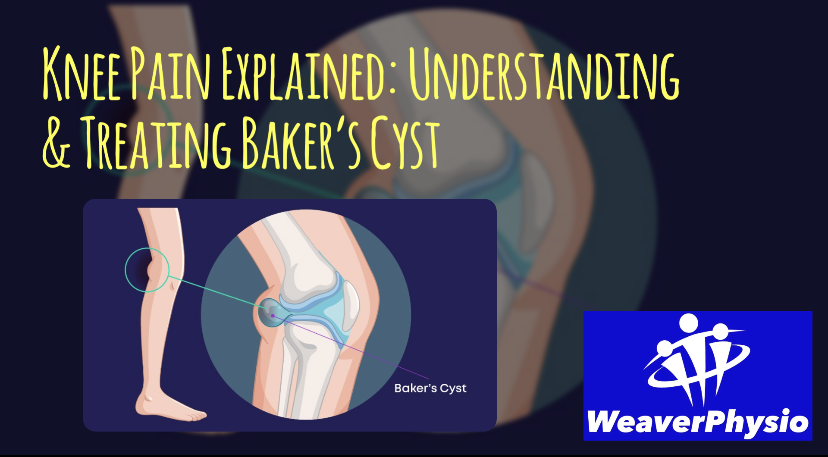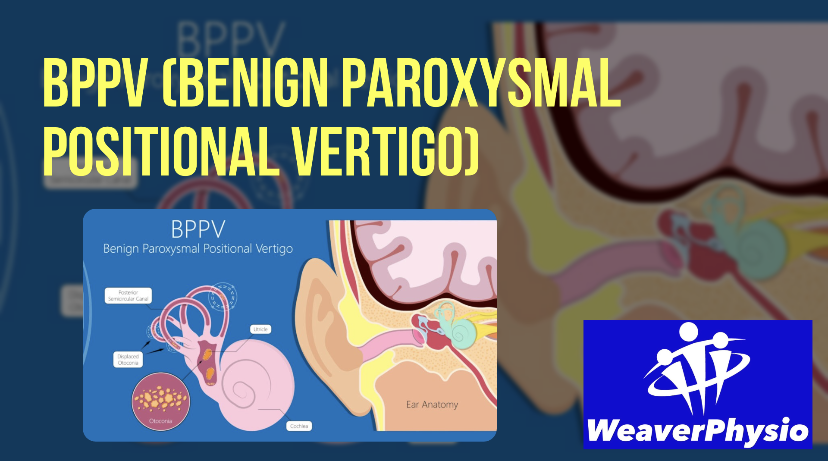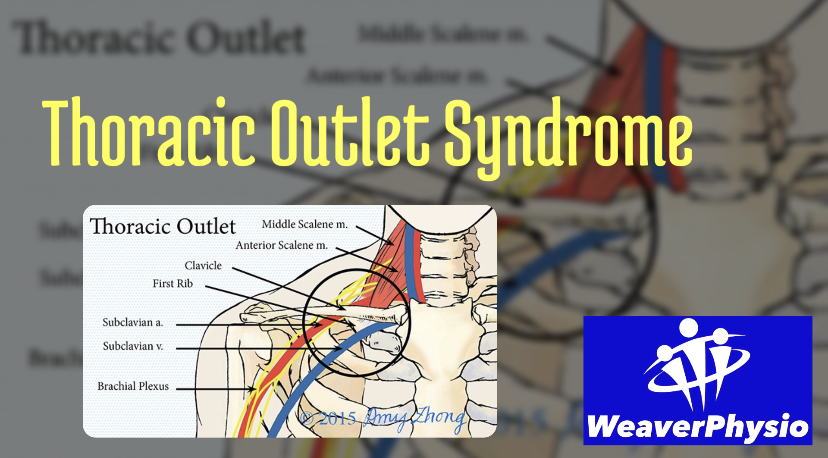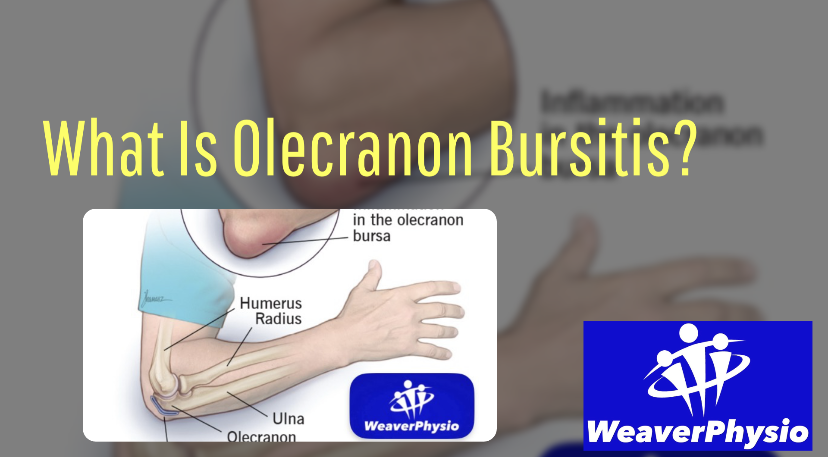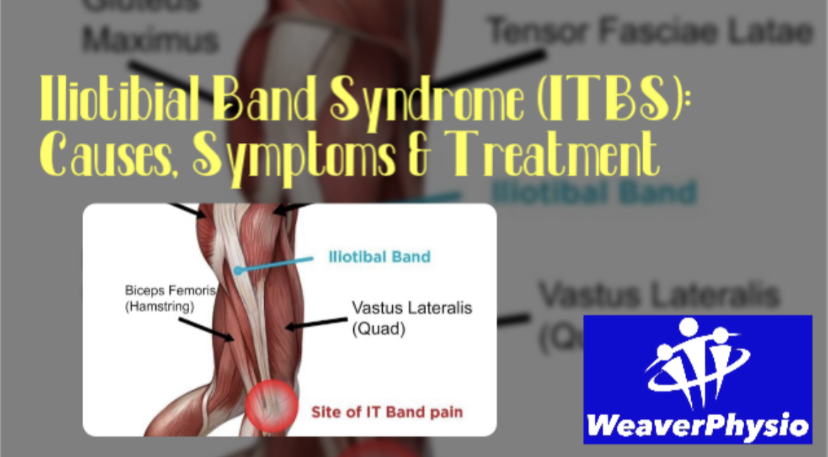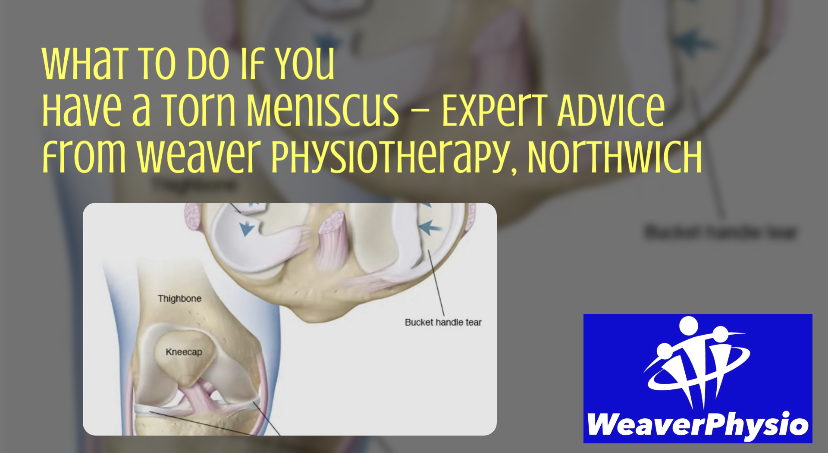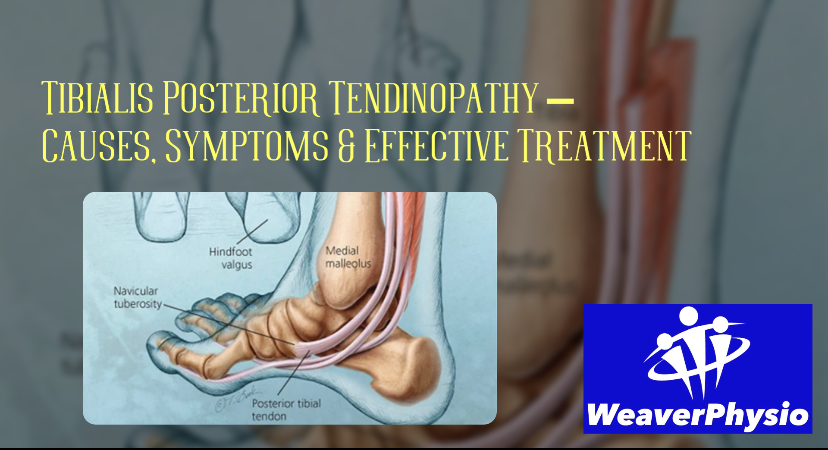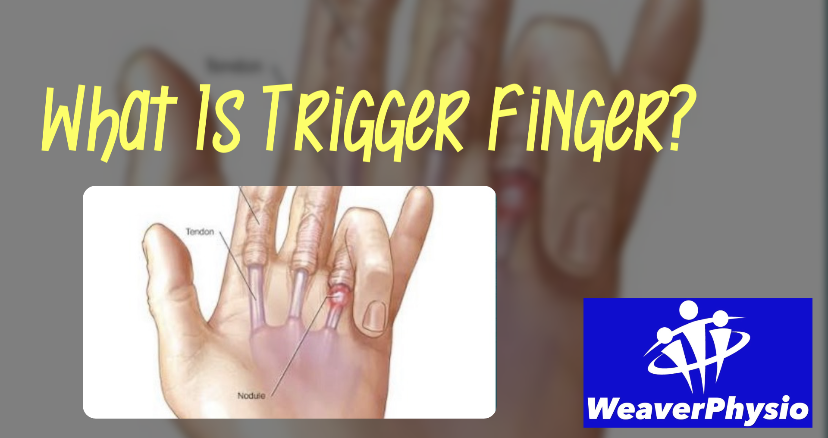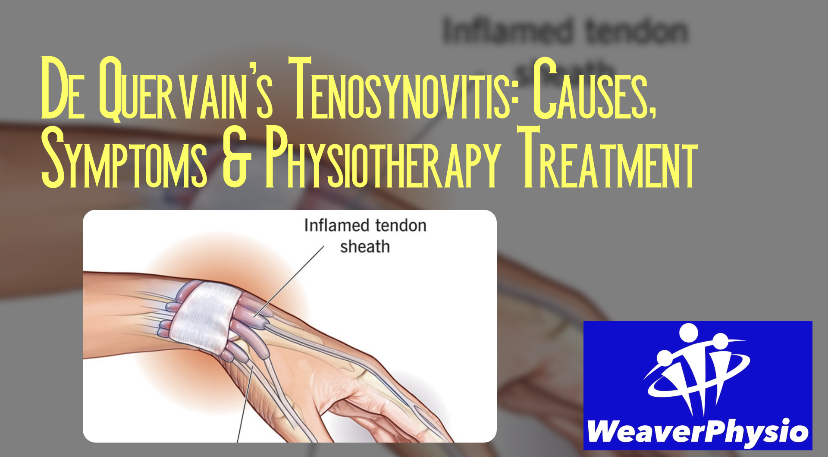Sacroiliitis:
Causes, Symptoms, and Expert Physiotherapy Treatment in Northwich, Cheshire
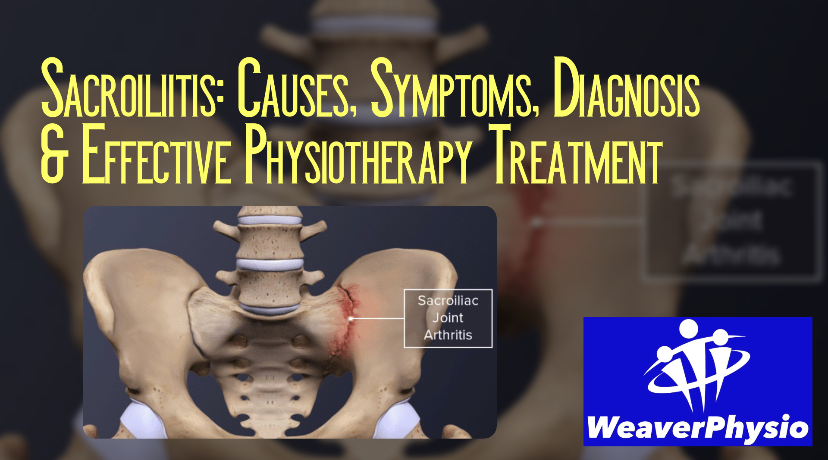
Living with persistent lower back, hip, or buttock pain can be frustrating — especially when the discomfort seems to flare up after standing, climbing stairs, or sitting for long periods. One often-overlooked cause of such pain is sacroiliitis — inflammation of the sacroiliac (SI) joints that connect your spine to your pelvis.
At Weaver Physiotherapy & Sports Injury Clinic in Northwich, Cheshire, our experienced Chartered Physiotherapists diagnose and treat sacroiliitis using evidence-based methods that target the root cause, not just the symptoms. Whether your pain is mild or debilitating, early physiotherapy intervention can make a huge difference in your recovery, mobility, and long-term comfort.
What Is Sacroiliitis?
Sacroiliitis refers to inflammation or irritation of one or both sacroiliac joints, which are located at the base of your spine — where the sacrum (the triangular bone at the bottom of your spine) meets the iliac bones of your pelvis. These joints act as shock absorbers, transferring weight and forces between the upper body and legs.
When inflamed, the SI joints can cause sharp, aching, or radiating pain in the lower back, hips, buttocks, and sometimes down the legs. Sacroiliitis can be either acute (short-term) or chronic (long-lasting), and it’s often mistaken for other conditions such as sciatica, lumbar disc injury, or hip arthritis.
Understanding the Role of the Sacroiliac Joints
Although small in movement, the sacroiliac joints play a major role in stabilising your body during walking, running, and lifting. They’re supported by strong ligaments and muscles that provide both stability and slight flexibility.
When these joints become irritated, overloaded, or restricted, the result can be pain, stiffness, and postural imbalance — affecting everything from walking patterns to sleep quality.
Common Causes of Sacroiliitis
There are several reasons why the sacroiliac joints become inflamed or painful. Some of the most common causes include:
1. Trauma or Injury
A sudden impact — such as a fall onto the buttocks, car accident, or sporting collision — can damage the SI joints or supporting ligaments, leading to inflammation and pain.
2. Repetitive Stress
Repetitive loading through the pelvis, such as running on uneven surfaces, lifting heavy weights, or standing for prolonged periods, can place excessive stress on the joints.
3. Leg Length Discrepancy or Poor Biomechanics
Even a small difference in leg length, pelvic tilt, or abnormal gait can cause asymmetrical stress across the SI joints, leading to irritation over time.
4. Pregnancy and Postpartum Changes
During pregnancy, hormonal changes cause the ligaments around the pelvis to relax to prepare for childbirth. This can make the SI joints more mobile and prone to inflammation — a condition often called postpartum pelvic girdle pain.
5. Inflammatory Conditions
Autoimmune or inflammatory diseases such as ankylosing spondylitis, psoriatic arthritis, or Crohn’s disease can cause chronic inflammation of the sacroiliac joints.
6. Degenerative Changes
As we age, wear and tear of the SI joints can lead to osteoarthritis, contributing to stiffness and pain in the lower back and hips.
Symptoms of Sacroiliitis
Sacroiliitis can cause a variety of symptoms that often mimic other lower back or hip problems. Common signs include:
• Dull, aching, or sharp pain in the lower back, buttocks, hips, or thighs
• Pain that worsens with prolonged standing, climbing stairs, or running
• Stiffness and reduced mobility in the lower back or pelvis
• Pain when rolling over in bed or getting up from a seated position
• Radiating pain that may mimic sciatica
• Discomfort when weight-bearing on one leg
• In severe or chronic cases, inflammation may cause night pain or fatigue
If these symptoms sound familiar, it’s important to seek professional assessment rather than self-diagnosing. Conditions like disc herniation, piriformis syndrome, or hip arthritis can present similarly, but require different treatments.
How Sacroiliitis Is Diagnosed
At Weaver Physiotherapy & Sports Injury Clinic in Northwich, diagnosis begins with a comprehensive assessment by one of our Chartered Physiotherapists.
This includes:
1. Detailed history-taking – understanding how and when your pain started, any aggravating factors, injuries, or medical history.
2. Postural and gait analysis – to detect pelvic misalignment or leg length discrepancies.
3. Palpation and movement testing – gentle pressure and movement tests to identify SI joint tenderness and asymmetry.
4. Functional testing – assessing movement patterns like sitting, bending, and walking to see how your body compensates.
5. Special tests – such as the FABER test (Flexion, Abduction, External Rotation) and sacral thrust test to confirm SI joint involvement.
In chronic or complex cases, your physiotherapist may recommend imaging such as X-rays, MRI, or CT scans to rule out other causes like arthritis or disc injury.
How Physiotherapy Can Help Sacroiliitis
Physiotherapy is one of the most effective, non-invasive treatments for sacroiliitis. At Weaver Physio, our goal is to:
✅ Reduce pain and inflammation
✅ Restore normal movement and alignment
✅ Improve core and pelvic stability
✅ Prevent recurrence through education and exercise
Let’s look at how we achieve this step-by-step.
1. Pain Relief and Inflammation Reduction
In the early stages, the focus is on reducing inflammation and relieving pain. This may include:
• Manual therapy – gentle mobilisations of the sacroiliac joint to restore alignment and movement.
• Soft tissue release – targeting tight muscles such as the glutes, piriformis, and lower back.
• Acupuncture or dry needling – to release muscle tension and promote blood flow.
• Shockwave therapy – for chronic or stubborn sacroiliac pain, to stimulate healing and reduce sensitivity.
• Heat or ice therapy – depending on whether inflammation or stiffness is dominant.
2. Correcting Alignment and Mobility
If pelvic or spinal alignment issues are contributing to your sacroiliitis, your physiotherapist may use:
• Joint mobilisation to restore normal SI joint movement
• Muscle energy techniques (METs) to correct pelvic asymmetry
• Postural re-education to improve sitting and standing alignment
• Stretching programmes for tight hip flexors, hamstrings, and gluteal muscles
This phase is crucial for restoring normal biomechanics and preventing recurring irritation.
3. Strengthening and Stability Work
Long-term relief from sacroiliitis depends on building core and pelvic stability. Your physiotherapist will design a personalised exercise programme including:
• Core strengthening – targeting deep abdominal and back stabilisers
• Glute activation – to support hip and pelvic alignment
• Pelvic floor engagement – especially important for postpartum clients
• Functional stability training – such as single-leg balance and controlled movement drills
At Weaver Physio, we often incorporate these exercises into tailored rehabilitation programmes that evolve as your strength improves.
4. Education and Lifestyle Advice
Understanding what triggers your pain is vital. We’ll guide you on:
• Correct sitting, lifting, and sleeping postures
• Safe return to sport or gym training
• Footwear and orthotic advice (if poor biomechanics contribute)
• Load management – how to pace daily activities to avoid flare-ups
• Strategies for stress reduction and relaxation, as tension can worsen pain
5. Return to Normal Activity
Once pain is under control and movement is restored, we’ll help you return to your normal lifestyle safely — whether that’s running, playing sport, or working pain-free.
For runners and athletes, we also offer Video Gait Analysis and Runner’s MOT assessments to ensure your biomechanics are balanced and injury-resistant.
Other Treatments That May Support Recovery
In some cases, sacroiliitis may benefit from additional interventions alongside physiotherapy:
• Shockwave Therapy – highly effective for chronic inflammation and tendon involvement around the SI joint.
• Sports or Deep Tissue Massage – to relieve muscle tension and improve circulation.
• Acupuncture – to reduce pain and stimulate natural healing.
• Rehabilitation classes – to maintain flexibility and strength long-term.
At Weaver Physiotherapy & Sports Injury Clinic, we tailor each treatment plan to your specific needs — ensuring a truly personalised recovery journey.
How Long Does Recovery Take?
Recovery from sacroiliitis depends on several factors — the severity of inflammation, duration of symptoms, and underlying cause.
• Mild cases: 2–6 weeks with consistent physiotherapy and home exercises.
• Moderate to chronic cases: 8–12 weeks or more, particularly if posture or biomechanical issues are contributing.
• Inflammatory or arthritic conditions: require ongoing management and exercise to maintain comfort and function.
The good news is that most people experience significant improvement with the right combination of hands-on treatment, strengthening, and lifestyle modifications.
Can Sacroiliitis Be Prevented?
While not all cases can be avoided, you can greatly reduce your risk by:
• Maintaining strong core and gluteal muscles
• Practising good posture and lifting technique
• Avoiding prolonged sitting or standing
• Keeping hip and lower back mobility through regular stretching
• Ensuring proper footwear and gait alignment
• Managing body weight and stress levels
Preventive physiotherapy sessions, such as a postural assessment or Runner’s MOT, can detect and correct issues before they lead to SI joint irritation.
When to See a Physiotherapist
If your back or hip pain:
• Persists for more than a few weeks
• Worsens when standing or climbing stairs
• Radiates into the buttock or thigh
• Affects sleep or daily movement
…it’s time to seek help. Early physiotherapy treatment can prevent chronic pain and long-term dysfunction.
Why Choose Weaver Physiotherapy & Sports Injury Clinic, Northwich
At Weaver Physio, we’re passionate about helping people across Northwich, Knutsford, Winsford, Middlewich, Tarporley, and Frodsham move better, feel stronger, and live pain-free.
Here’s why patients trust us for sacroiliitis treatment:
• Over 70 years of combined clinical experience in physiotherapy and rehabilitation
• Chartered Physiotherapists & Sports Injury Specialists registered with the HCPC and CSP
• Advanced treatments including Shockwave Therapy, Acupuncture, Sports Massage, and Video Gait Analysis
• Tailored treatment plans designed around your goals and lifestyle
• Free onsite parking and flexible appointments
• Trusted by local GPs, consultants, and athletes across Cheshire
Our mission is simple — to help you recover faster, move better, and return to doing what you love, without pain or restriction.
Book Your Sacroiliitis Assessment Today
If you’re struggling with sacroiliac joint pain, don’t wait for it to get worse. The sooner you get assessed, the faster your recovery can begin.
📞 Call Weaver Physiotherapy & Sports Injury Clinic today on 01606 227484
🌐 Visit https://www.weaverphysio.com
📍 Serving Northwich, Knutsford, Winsford, Middlewich, Tarporley & surrounding Cheshire areas
Let our expert physiotherapists help you find the root cause of your pain, guide you through a personalised recovery plan, and get you back to a pain-free, active lifestyle.
